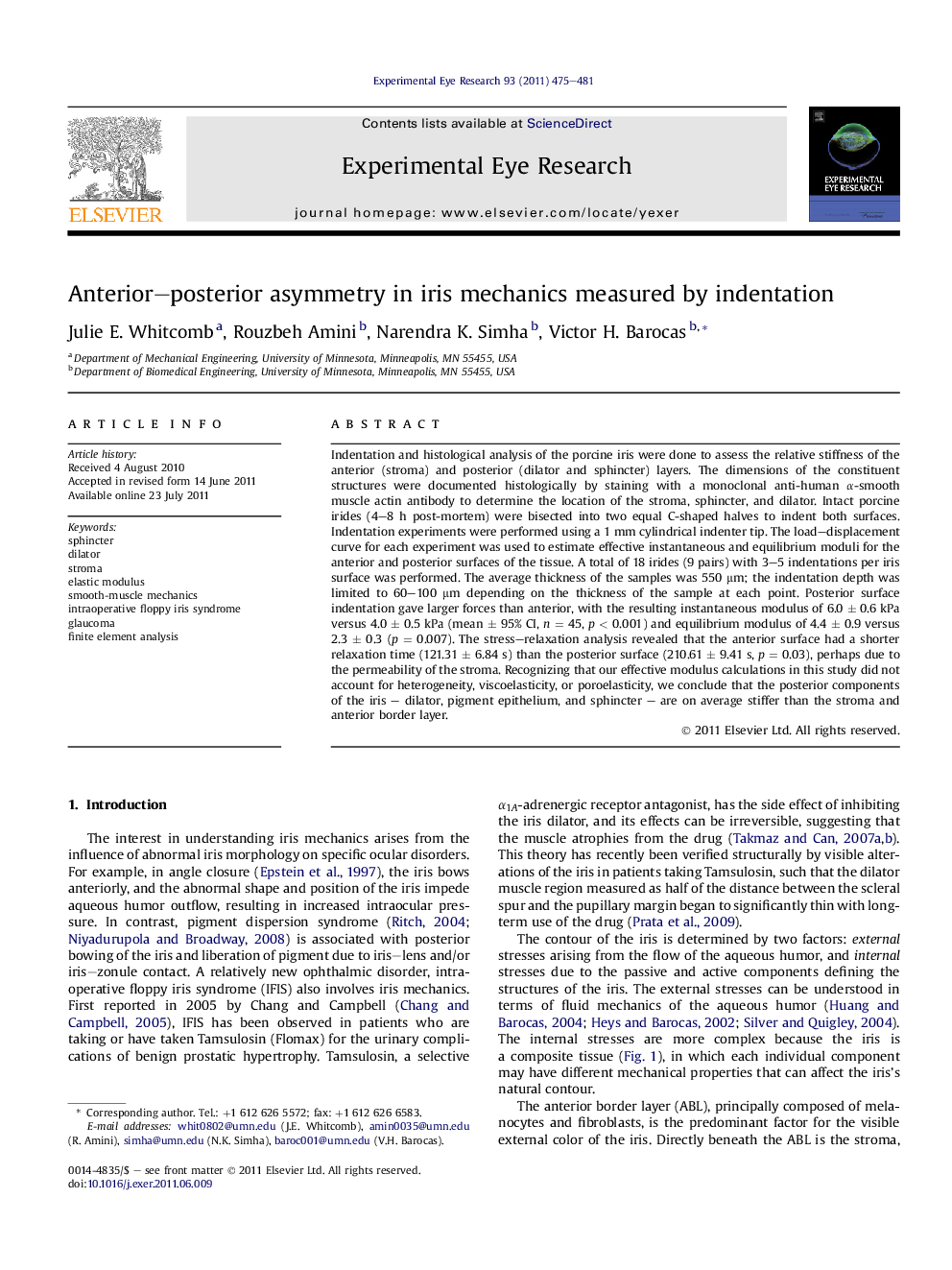| کد مقاله | کد نشریه | سال انتشار | مقاله انگلیسی | نسخه تمام متن |
|---|---|---|---|---|
| 4011589 | 1261153 | 2011 | 7 صفحه PDF | دانلود رایگان |

Indentation and histological analysis of the porcine iris were done to assess the relative stiffness of the anterior (stroma) and posterior (dilator and sphincter) layers. The dimensions of the constituent structures were documented histologically by staining with a monoclonal anti-human α-smooth muscle actin antibody to determine the location of the stroma, sphincter, and dilator. Intact porcine irides (4–8 h post-mortem) were bisected into two equal C-shaped halves to indent both surfaces. Indentation experiments were performed using a 1 mm cylindrical indenter tip. The load–displacement curve for each experiment was used to estimate effective instantaneous and equilibrium moduli for the anterior and posterior surfaces of the tissue. A total of 18 irides (9 pairs) with 3–5 indentations per iris surface was performed. The average thickness of the samples was 550 μm; the indentation depth was limited to 60–100 μm depending on the thickness of the sample at each point. Posterior surface indentation gave larger forces than anterior, with the resulting instantaneous modulus of 6.0 ± 0.6 kPa versus 4.0 ± 0.5 kPa (mean ± 95% CI, n = 45, p < 0.001) and equilibrium modulus of 4.4 ± 0.9 versus 2.3 ± 0.3 (p = 0.007). The stress–relaxation analysis revealed that the anterior surface had a shorter relaxation time (121.31 ± 6.84 s) than the posterior surface (210.61 ± 9.41 s, p = 0.03), perhaps due to the permeability of the stroma. Recognizing that our effective modulus calculations in this study did not account for heterogeneity, viscoelasticity, or poroelasticity, we conclude that the posterior components of the iris – dilator, pigment epithelium, and sphincter – are on average stiffer than the stroma and anterior border layer.
► This study quantifies the stiffness of the anterior and posterior layers of the iris.
► A significant difference was found between anterior and posterior surface.
► This suggests that the dilator and sphincter are stiffer than the stroma.
► Shorter relaxation time was found on the anterior surface compared to the posterior.
► Suggesting stromal permeability could be a significant factor on the anterior.
Journal: Experimental Eye Research - Volume 93, Issue 4, October 2011, Pages 475–481